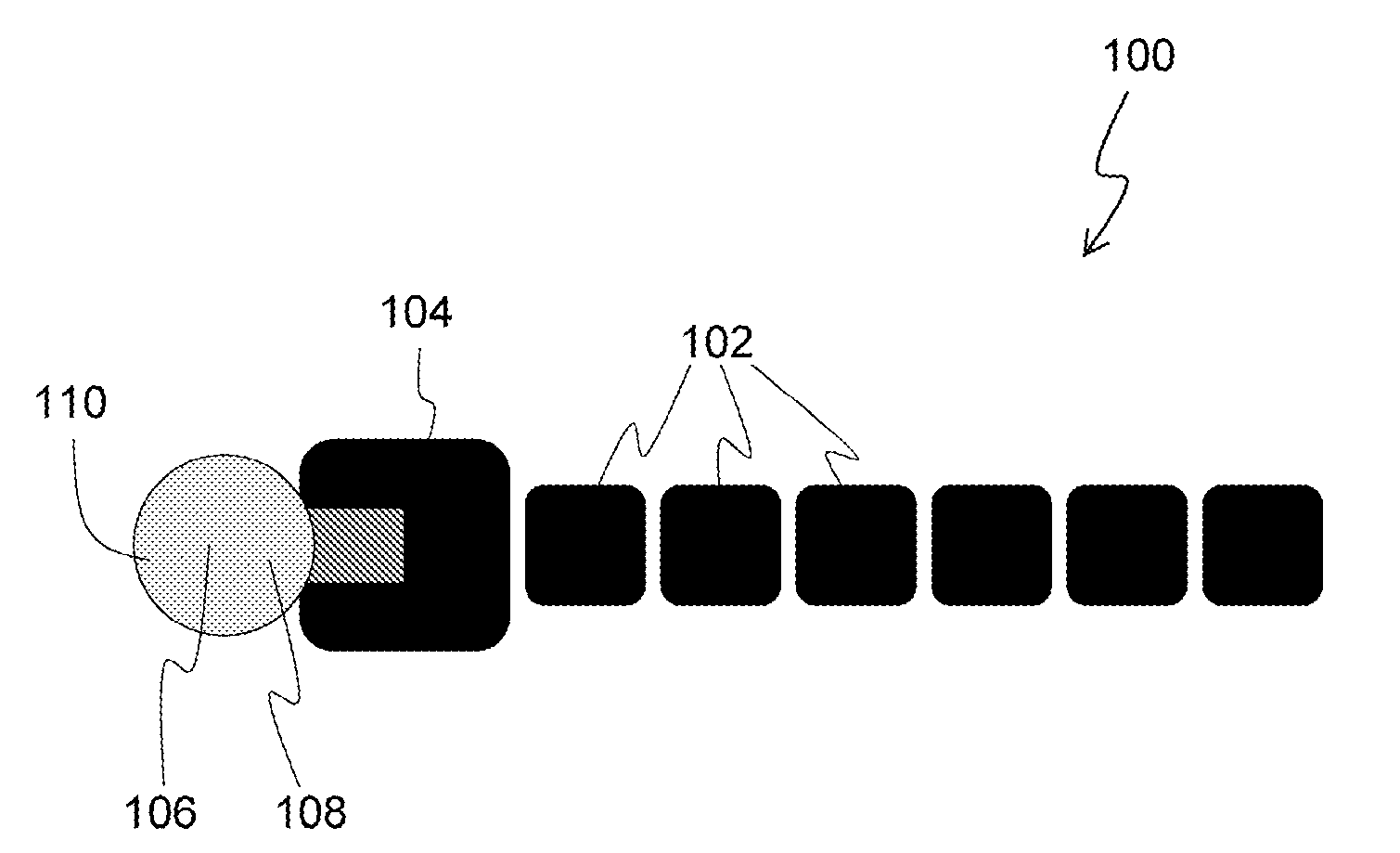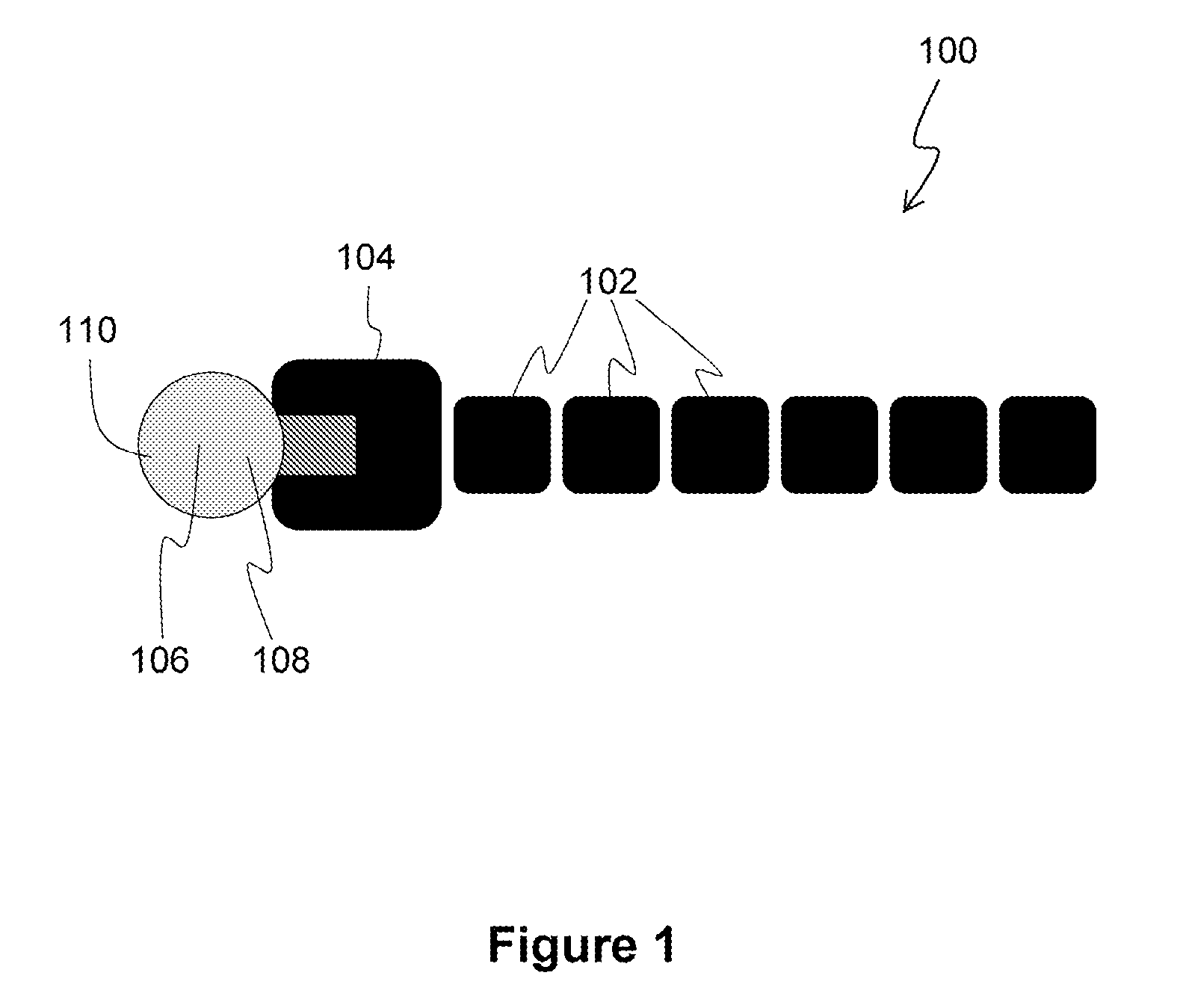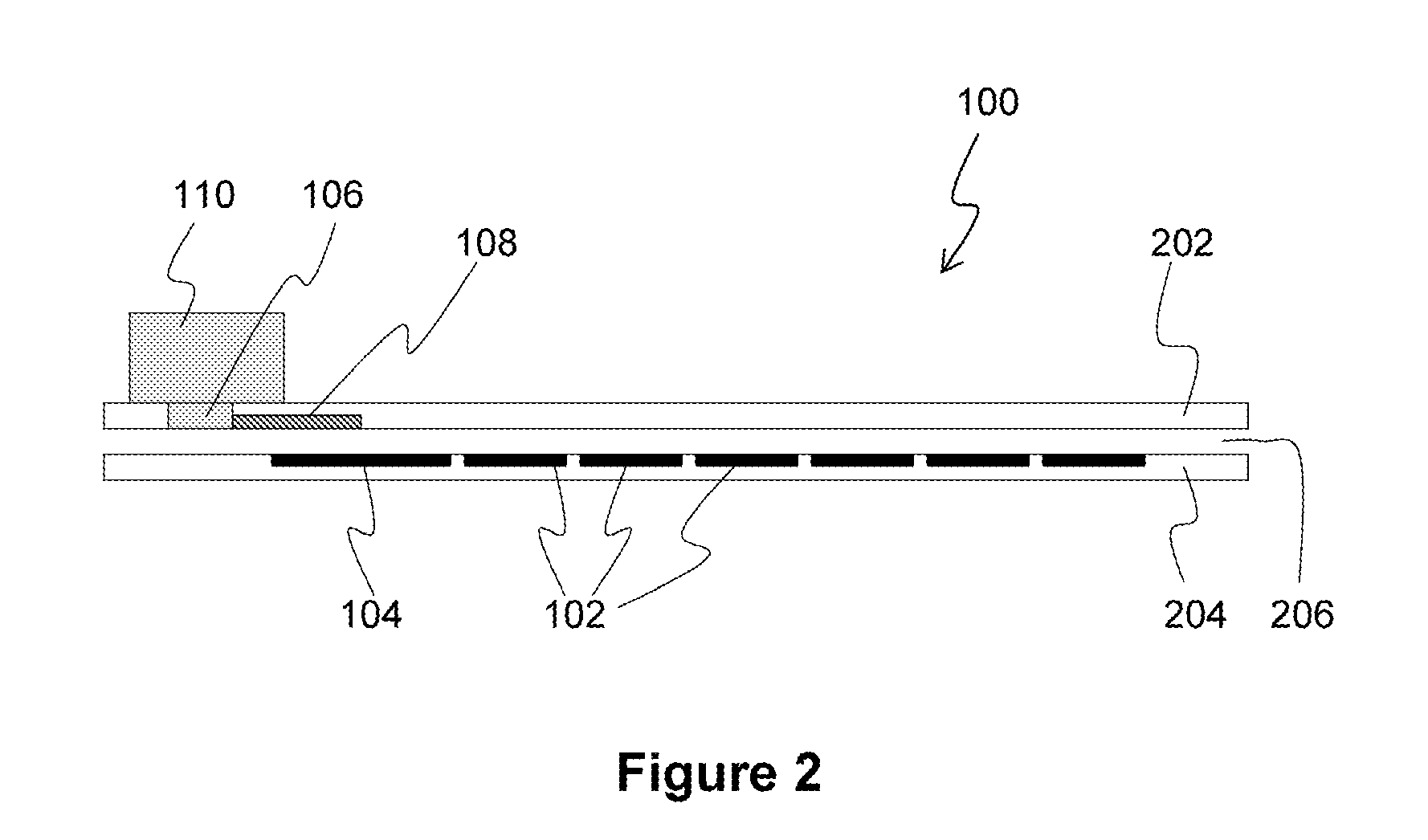Surface Assisted Fluid Loading and Droplet Dispensing
a micro-actuator and fluid loading technology, applied in the field of droplet operations, can solve the problems of ineffectiveness for untrained users and difficulty in introducing liquids such as aqueous samples into the droplet actuator loaded with filler fluid
- Summary
- Abstract
- Description
- Claims
- Application Information
AI Technical Summary
Benefits of technology
Problems solved by technology
Method used
Image
Examples
Embodiment Construction
[0027]The invention provides a droplet actuator having a surface having a relatively increased wettability relative to the surrounding surface to facilitate loading of a fluid onto the droplet actuator. In general, the droplet actuator may have two substrates separated by a gap to form a chamber and may include in various arrangements electrodes for conducting droplet operations in the gap. The wettable surface may be arranged in any manner which facilitates loading of a fluid into the gap. The wettable surface may in some cases be more wettable and / or more hydrophilic than the surrounding surface and may be arranged in any manner which facilitates loading of a fluid into the gap. Typically, the wettable surface will be arranged so that the fluid will flow into the gap and into proximity with one or more of the electrodes. In some cases the fluid will flow without added pressure into the gap and into proximity with one or more of the electrodes. In other cases, sufficient pressure m...
PUM
 Login to View More
Login to View More Abstract
Description
Claims
Application Information
 Login to View More
Login to View More - R&D
- Intellectual Property
- Life Sciences
- Materials
- Tech Scout
- Unparalleled Data Quality
- Higher Quality Content
- 60% Fewer Hallucinations
Browse by: Latest US Patents, China's latest patents, Technical Efficacy Thesaurus, Application Domain, Technology Topic, Popular Technical Reports.
© 2025 PatSnap. All rights reserved.Legal|Privacy policy|Modern Slavery Act Transparency Statement|Sitemap|About US| Contact US: help@patsnap.com



